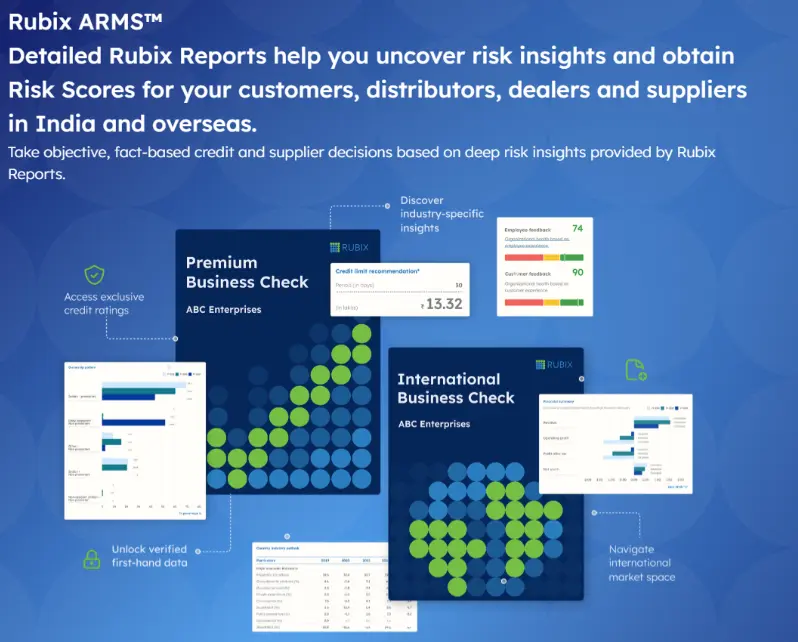The global economic and political landscape in 2025 continues to face intense challenges. Global inflation remains elevated, and while recent reductions in interest rates, such as the Federal Reserve’s recent 25- basis-point cut in November may offer some relief, emerging economies like India continue to experience sticky inflation, limiting their ability to follow suit. The world’s second-largest economy, China is confronted by several challenges including lower business and consumer confidence, dropping property prices, andslowing growth.
Geopolitical tensions are running high, and freight rates are volatile due to rising tensions in the Red Sea region. The election of Donald Trump as President of the US seems to suggest an increase in the trade conflict between the US and China. Amid these conditions, small and medium-sized enterprises (SMEs) face particularly severe pressures in accessing affordable capital due to the increased cost of capital and heightened risk. The International Finance Corporation (IFC) estimates a $5 trillion financing gap for micro, small, and medium enterprises (MSMEs) globally, with challenges exacerbated by trade disruptions from geopolitical tensions. For instance, S&P Global reported a significant impact on supply chains, with the Russia-Ukraine conflict raising transportation costs and the U.S.-China trade tension reshaping trade routes.
Supply Chain Finance: A growing lifeline for SMEs
Supply Chain Finance (SCF) has emerged as a key solution for meeting the liquidity needs of SMEs in a volatile environment, growing over 20% in recent years. The World SCF Report shows that over 60% of new SCF adopters in 2023 were SMEs, benefiting from the reduced reliance on traditional banking and streamlined access to funds via digital platforms. The 2024 report estimates that the global SCF market exceeds $2.3 trillion, growing at a robust compound annual growth rate (CAGR) of 22.7% over the past seven years. This highlights SCF’s role in providing flexible and accessible financing solutions for businesses navigating complex supply chain dynamics.
Amid persistently high interest rates and inflationary pressures, SCF offers companies in emerging markets a cost-effective alternative to traditional loans. Its cost-effective nature has led to a 30% increase in demand across emerging markets, as reported by S&P Global, as businesses seek alternatives to manage cash flow under tightening credit conditions. Let us look at the Macroeconomic Trends Driving SCF in 2025
1. Deep-tier supply chain finance
Deeper-Tier SME counterparties form a crucial part of the supply chain ecosystems built around large anchor corporates with strong credit ratings and borrowing capacities. Deep-Tier Supply Chain Finance (DTSCF) leverages these supply chain relationships, extending financing beyond top-tier, larger suppliers to smaller suppliers in tiers 2, 3, 4, and beyond. By unlocking working capital for downstream suppliers, DTSCF helps large corporates secure their supply chains while enhancing transparency and visibility across the entire value chain. For SME suppliers, DTSCF provides timely and affordable access to financing, enabling them to manage cash flow effectively, meet operational demands, and scale their businesses. Majority of banks globally offer vendor financing for direct suppliers of a large buyer but fail to cater to their extended supply chains given the bank’s position to risk rate those suppliers. This often leaves smaller suppliers seeking expensive sources of credit, while also limiting the bank’s own earning potential due to limited utilisation rates in existing vendor financing programs.
Deep-Tier Supply Chain Finance programs aim to solve the trifecta of problems, inability of banks to take credit exposure on deep tier suppliers, improve utilisation of existing vendor financing programs and provide timely and inexpensive credit to the last mile of the supply chain. DTSCF cascades the Anchor (Large Buyer’s) creditworthiness downstream, which can be used by deeper tiers of the supply chain to receive early payments. A DTSCF program uses advancement in technologies such as blockchains, and smart contracts to help digitise and simplify the cascading of credit downstream.
As an example, a large buyer such as “Automobile Company A” deals with a few thousand suppliers who directly supply to them (Tier 1). These Tier 1 suppliers in turn deal with suppliers of their own (Tier 2) and so on till Tier (n). In Deep-Tier Financing program, “Automobile Company A” can direct its partner bank to make early payments to each of these tiers while providing an Irrevocable Guarantee to pay the bank on the due date. With the help of technologies such as blockchains and smart contracts, these Irrevocable Payment Undertakings can be fractionalised and transferred among different tiers, who can then go to “Automobile Company A’s” partner bank to get them discounted. “Automobile Company A’s” partner bank need not take any direct credit exposure on the suppliers, but at the same time the bank benefits through higher utilisation of “Automobile Company A’s” limits and the suppliers get financing at the lowest rate possible.
2. Blockchain for transparency
Blockchain has transformed SCF by increasing transaction security and fostering trust. Its integration into SCF delivers transparency and security by enabling immutable record-keeping and real-time data sharing. Blockchain eliminates discrepancies in invoices and purchase orders, reducing fraud risks like duplicate financing. The key problem that Blockchains solve is the ability to trace a transaction from the source, giving financiers greater comfort in financing transactions. Currently financiers rely on documents as evidence for trade but have no idea of the authenticity of the underlying transaction itself.
With Blockchains, it is possible to tie financing to an event in the transaction lifecycle as opposed to documents. This helps reduce risk significantly for the financiers. On the other hand, smart contracts automate payment releases once predefined conditions, such as delivery confirmation, are met. For instance, IBM Blockchain has demonstrated how tracking goods along supply chains in real-time ensures payment accuracy, cutting settlement times by up to 50%.
Pilots by the World Economic Forum (WEF) reported a 30% rise in security and efficiency in cross-border transactions using blockchain-based SCF, highlighting benefits for compliance and traceability.
3. AI and predictive analytics
Predictive Analytics has modernized SCF credit assessments by leveraging non-traditional data sources. Deloitte noted that in 2024, AI-driven models improved access to financing for MSMEs by bypassing conventional credit ratings, thereby expanding inclusion in underserved markets. Rubix Data Sciences – the supply chain credit risk assessment & monitoring platform uses host on non-traditional data and information to aid FIs in credit decisions. We expect this trend to strengthen further in 2025 as more data sources are digitized and the digital footprints of SMEs grow significantly.
4. DNI Initiative and MLETR, digitizing SCF instruments
The DNI (Digital Negotiable Instruments) initiative, based on the UNCITRAL Model Law on Electronic Transferable Records (MLETR), aims to digitize trade documents like bills of lading and promissory notes, transforming the way SCF is conducted. MLETR allows electronic trade documents to carry legal status, reducing dependency on paper and increasing transactional efficiency. Leveraging Distributed Ledger Technology (DLT), DNI has demonstrated enhanced security and traceability for international transactions, a vital innovation in SCF. According to the International Trade & Forfaiting Association (ITFA), DNI-enabled SCF solutions could unlock liquidity faster, helping SMEs access capital amid global supply chain disruptions. The Emerging Tech Platforms Division at Vayana, recognises the transformative impact that MLETR is expected to have on the trade finance industry and has started working with key stakeholders in the Indian ecosystem – the banks, regulators, buyers and sellers to move the industry in this direction. Digital financial instruments carry immense potential to streamline processes and quicken credit disbursement for exporters and importers.
5. ISO 20022 standardization to enhance efficiency in driving SCF operations
ISO 20022 is a global messaging standard for financial transactions that enhances data quality, interoperability, and efficiency. It allows seamless communication between banks, corporates, and intermediaries by standardizing the format of financial messages such as invoices, payments, and remittance details. This uniformity reduces errors and accelerates payment reconciliation. For SCF, ISO 20022 facilitates automated and real-time processing, particularly in cross-border transactions. Platforms leveraging this standard can validate invoice authenticity faster and ensure compliance with local regulatory norms. According to SWIFT, ISO 20022 is expected to process 87% of high-value payment volumes by 2025, further streamlining global SCF operations.
6. Sustainability-linked incentives
Green SCF is reshaping trade by linking financing access to sustainable practices, a critical shift given that supply chains contribute to 80% of global emissions. The Securities and Exchange Board of India’s (SEBI’s) newly proposed guidelines, when implemented, will also play a role by promoting sustainable bonds, sustainability-linked bonds, and sustainable securitized debt instruments. It will provide incentives for companies in supply chains to adopt eco-friendly practices through lower financing costs or favourable terms, particularly for suppliers meeting sustainability targets. For SCF providers, there will be greater flexibility to support companies transitioning to greener or socially responsible models while still benefiting from risk-adjusted returns on securitized debt.
By leveraging these instruments, Sustainable SCF solutions will support decarbonization, help bridge the financing gap for SMEs, and align businesses with rising Environmental, Social, and Governance (ESG) standards. According to the European Banking Authority (EBA), green SCF options are projected to grow by 25% annually, while Astute Analytica forecasts the global sustainable SCF market will exceed $5.7 billion by 2032, driven by ESG compliance and sustainability demands.
7. Enhanced reporting and transparency
New standards from the Financial Accounting Standards Board (FASB) and International Accounting Standards Board (IASB) mandate detailed SCF disclosures. This enables greater visibility and accountability thus enhancing stakeholder trust. PwC’s 2023 report highlights this as a critical step toward better company liquidity assessment. Key elements of Enhanced Reporting include:
Program Details: The reporting must specify payment terms, including timing, the basis for determining payment, and any assets pledged as collateral or guarantees. This ensures clarity on the underlying structure of the SCF program.
Buyers’ Obligations to Finance Providers: Buyers are required to disclose:
- Outstanding Confirmed Amounts: The unpaid obligations validated by the buyer at the period’s end.
- Balance Sheet Presentation: A clear description of where these obligations are reflected.
- Roll-Forward Requirements: Effective 2024, companies must provide a roll-forward analysis detailing confirmed obligations, additions during the reporting period, and payments made.
Interim Reporting: Buyers must disclose outstanding confirmed amounts at the end of each interim reporting period, ensuring periodic visibility for stakeholders.
On the lines of these amendments, the Institute of Chartered Accountants of India (ICAI) has also issued the “Exposure Draft on Supplier Finance Arrangements – Amendment to Ind AS 7 and Ind AS 107” mandating additional disclosures of such arrangements to help investors understand it’s impact on the entity’s liabilities and cash flows and its exposure to liquidity risk. The proposed disclosures will likely be effective for the financial year beginning 1 April 2024. This granular reporting builds trust and facilitates better decision-making for investors and regulators, aligning SCF programs with modern corporate governance standards.
8. Digital-first accessibility of working capital for MSMEs to grow
A majority of SCF users in 2024 were SMEs, driven by fintech-enabled onboarding, which reduces costs and simplifies credit assessments. SCF providers are adopting Alternative Credit Models based on transaction histories and behavioural data, increasing financing accessibility for MSMEs lacking traditional credit histories.
The DPI (Digital Public Infrastructure) has been instrumental in enabling Fintech innovations in India leading to tremendous growth in SCF adoption especially among MSMEs who have traditionally been starved. The establishment of a platform like TReDS (Trade Receivable Discounting System) has been a huge success enabling over US$ 2 billion in financing every month for the working capital requirements of MSMEs. ‘TReDS is expected to build further on its success. Additionally, the newly started ITFS (International Trade Finance Services) is expected to repeat the same success; ITFS platforms like Vayana TradeXchange, are regulated marketplaces that enable convenient export and import financing for MSMEs around the world.
As SCF continues to evolve and become popular, it offers unprecedented opportunities to enhance liquidity, transparency, and resilience within global supply chains. The convergence of technology, regulatory frameworks, and sustainability incentives will shape its trajectory in 2025, with stakeholders reaping the benefits of inclusive and efficient financing. With data-driven insights and adaptive solutions, SCF remains at the forefront of modern trade finance, driving equitable growth in an increasingly interconnected world.
References:
- MSMEs Factsheet
- Impact of Geopolitics – Global Economic Outlook
- Big central banks are firmly in rate-cut mode
- Big Picture 2024 Supply Chain Outlook: Delivering resilience in adversity
- 2023 McKinsey Global Payments Report
- These are the biggest global risks we face in 2024 and beyond
- Transparency Reporting
- DNI MLETR TFD explained in brief
- MLETR: Forward-thinking legislation to guide practical solutions
- Word SCF Report 2024 by BCR
- Cybersecurity considerations 2024
- New standards for disclosing Supply Chain Finance programs
- Making supply-chain decarbonization happen








